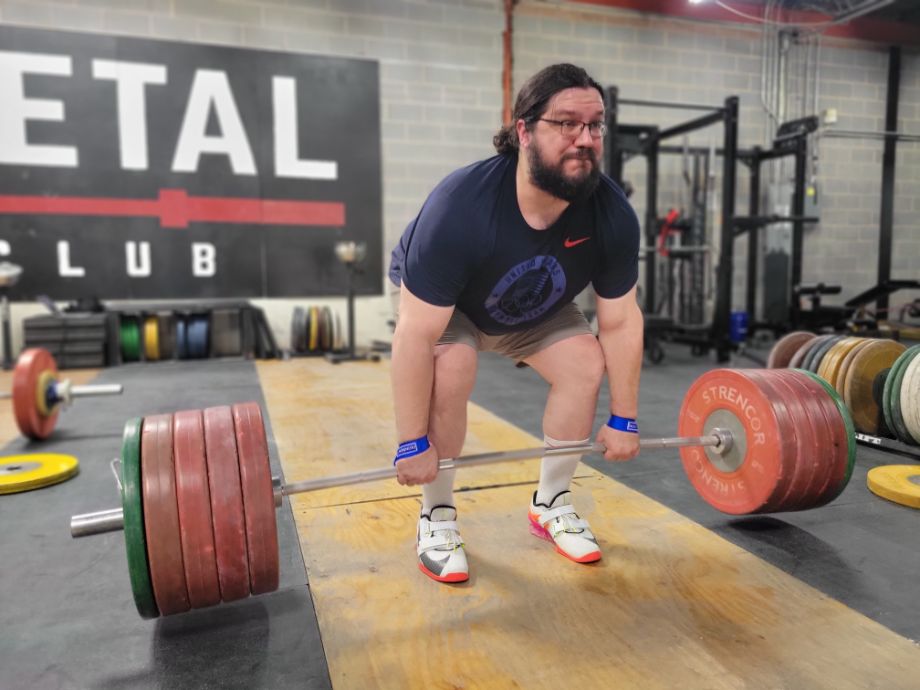We test and review fitness products based on an independent, multi-point methodology. If you use our links to purchase something, we may earn a commission. Read our disclosures.
Being an Olympic athlete in the sport of weightlifting, I actually don’t compete in the deadlift, but I do train with deadlifts and their variations often; it’s a staple to any athlete’s strength training because barbell exercise—sometimes done with dumbbells or kettlebells—will build your back and legs like few exercises can do.
There are many more benefits of deadlifts—aside from building strength and muscle mass—for me to recommend them to most gym-goers and fitness enthusiasts. If you don’t have a personal trainer or powerlifting athlete to ask nearby, no worries; in this article, I’ll break down the many deadlift benefits for lifters from this full-body exercise. Grab your bar and some of the best weight plates, and let’s jump in.
What Are Deadlifts?
If you’re new to lifting or resistance training, you may not know what a deadlift is. The name doesn’t help too much either since it sounds like a wrestling move the Undertaker might perform at Wrestlemania. However, a proper deadlift is actually pretty straightforward and easy enough to add to any lower-body training program.
A conventional deadlift is performed by lifting a weight up from the floor to a standing position, primarily hinging at the hips. The name comes from the fact that the weight begins at a dead stop. There’s no momentum to take advantage of; you’re just engaging your quads, hamstrings, glutes, and lumbar muscles to stand it up.
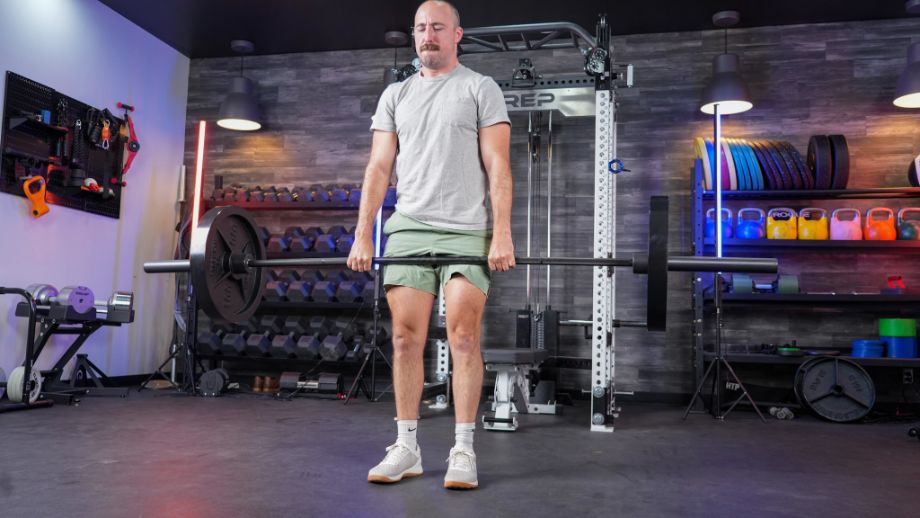
Typically, a deadlift is performed with an Olympic barbell and weight plates, but it can be done with any free weights—dumbbells, kettlebells, trap bars, or more. Although it’s a simple movement, it engages the entire body, providing the following benefits.
1. Provides A Full-Body Workout
Because you’re driving through your legs, you may think that the deadlift is primarily a lower-body movement, isolating the muscle groups of the legs: the glutes, hamstrings,and quadriceps muscles.
However, the deadlift engages and can build muscle in several major muscle groups both in the legs and upper body—like the lower back and hip extensors of the posterior chain, the abdominals and obliques of the core, or the erector spinae, latissimus dorsi, and trapezius muscles of the upper back. Proper form of the deadlift will lead to a total-body workout.
RELATED: Deadlift Muscles Worked
2. Builds Lower-Body Strength
Although it works and engages the core and upper back, the deadlift also helps build leg strength like few other barbell exercises—aside from the squat. Incorporating deadlifts into your workout routine can provide major strength gains to your legs.
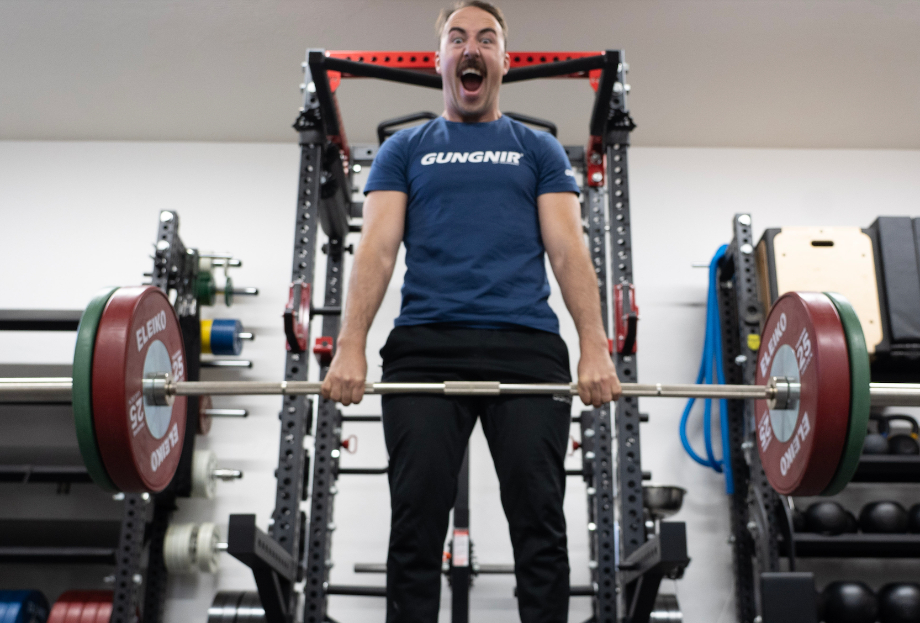
One study from 20151 showed that athletes using deadlifts regularly during their routine—twice a week for 10 weeks—increased their torque capabilities on the knee extensors and flexors (the quads and hamstrings). This led to an increase in the athletes’ vertical jump. Deadlifts are a great way to increase strength and athleticism in the legs.
3. Activates the Core and Back
One cue I often give my athletes is to keep their back tight so it doesn’t round out during maximal loads. Just as important, however, is to maintain a strong core throughout the movement.
The deadlift is considered a functional movement because it replicates everyday situations, such as lifting a heavy object outside the gym. Most functional fitness relies on a strong core and torso. Not only should the back be active and engaged, but the abdominal muscles should be tight and active to achieve an ideal core strength.
Not only does a strong core help you outside of a gym with deadlift-like movements, but it’ll also help you brace and stay solid across a broad spectrum of movements: bench presses, squats, overhead presses, Olympic lifts, and more. The deadlift is one of the best exercises to practice a strong core, which will carry over to other movements, in and out of the gym.
4. Is Simple To Perform
There’s a low barrier to entry for the deadlift. In particular, the deadlift technique is fairly simple. Just lift a weight up from the floor.
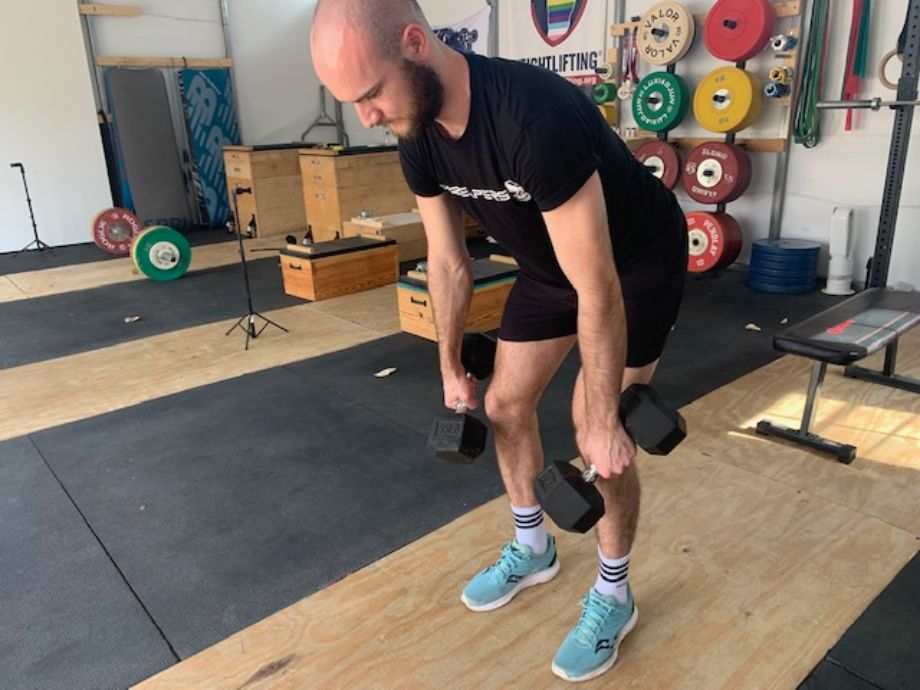
The deadlift can also be performed practically anywhere; all you need are some free weights, be it a barbell and plates, a pair of dumbbells, or kettlebells. Whether or not you’re in a commercial gym or outfitting your garage with home gym essentials, you’ll be able to perform this stellar exercise in almost any setting.
5. Has Less Risk During Missed Attempts
I compete in the Olympic lifts—the snatch and the clean and jerk—where you lift a bar from the floor to over your head in powerful, dynamic movements. One training aspect a lifter should learn is how to bail from a missed snatch, clean, or squat properly, or else the barbell could fall on you, causing injury.
RELATED: How To Bail Out of a Squat
With a deadlift, however, the risk of injury during a missed attempt is lower since the bar stays in front of you and rises to hip height at most. If you’re about to miss a repetition, you can simply drop the bar, and it will remain in front of you, keeping the chance of injury during a bail pretty low. Deadlifts are one of the easiest weighted movements to bail from.
6. Can Help Reduce Low Back Pain
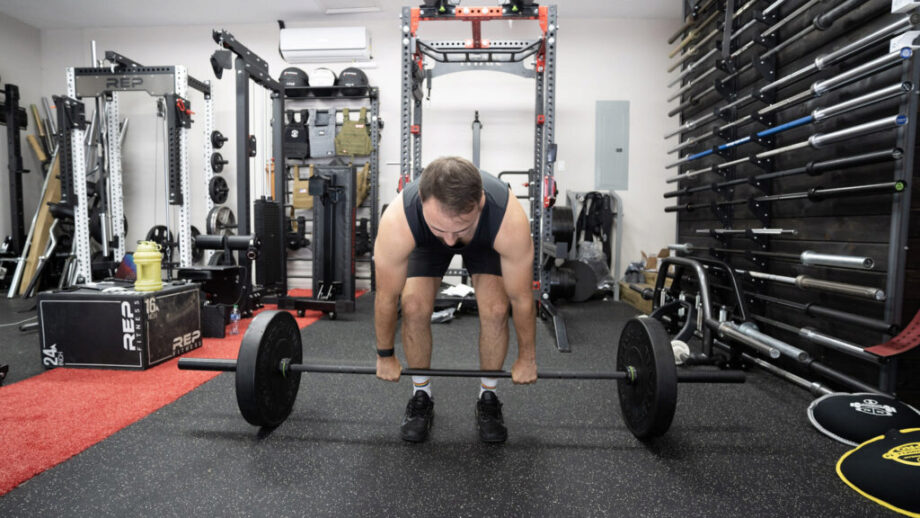
Doing the deadlift with proper form can help build muscle in your back, particularly along the spine with the erector spinae and back extensors. A strong back leads to a healthy back, too. According to the Journal of Strength and Conditioning Research2, the deadlift exercise can help reduce pain and disability in some people with lower back pain.
It’s important to note that the review mentioned above also states the importance of having enough back and hip extensor strength to maintain proper form. To get the most out of a deadlift, you’ll want to maintain a neutral spine, bracing your back and abdominal muscles through the entire range of motion. If you experience low back pain, consult with a certified personal trainer before tackling heavy deadlifts.
7. Improves Power and Athleticism
Deadlifts can help in athletic performance, such as jumping and sprinting. A study from 20113 showed a correlation between athletic performance and core stability—trained during the deadlift. In the study, core stability improved scores in athletic tests such as the 40-yard dash, vertical jump, and a medicine ball throw.
A more recent study from 20204 compared the deadlift and squat’s efficacy at building strength. The study concluded that both exercises improved leg strength and helped improve performance in power-based plyometric exercises, like jumps and sprints.
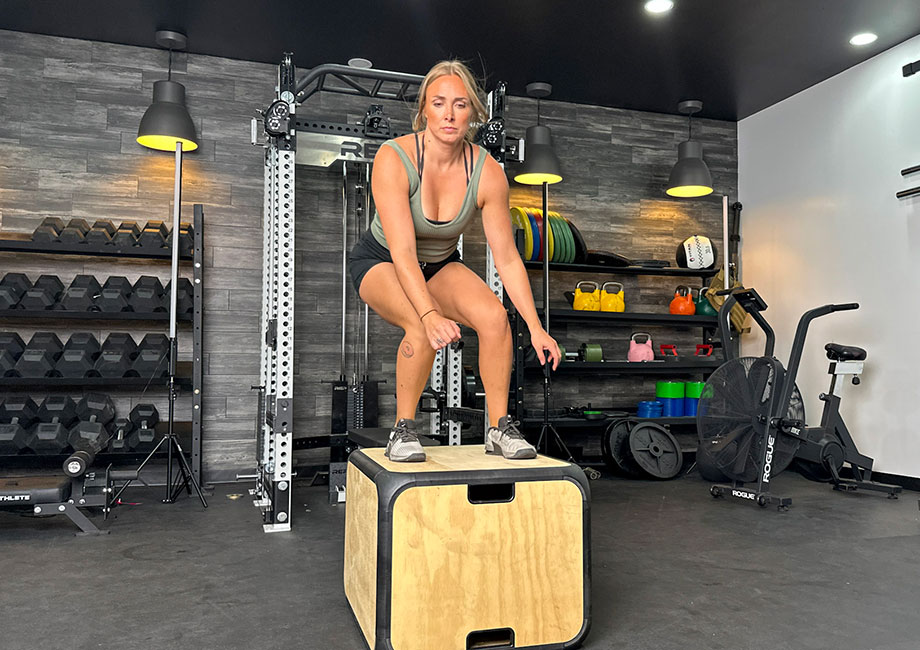
8. Provides a Positive Hormonal Response
A study from 20145 measured the hormonal response provided from resistance training, particularly free weight squats and the leg press machine, particularly anabolic hormones like testosterone and HGH. These exercises, particularly with free weights, can trigger an acute hormonal boost.
Due to the muscles recruited and stress of the movement, deadlifts provide the same hormonal response. According to the study, the natural increase of anabolic hormones can lead to substantial benefits, including improved strength and muscle growth.
9. Can Help Increase Bone Density
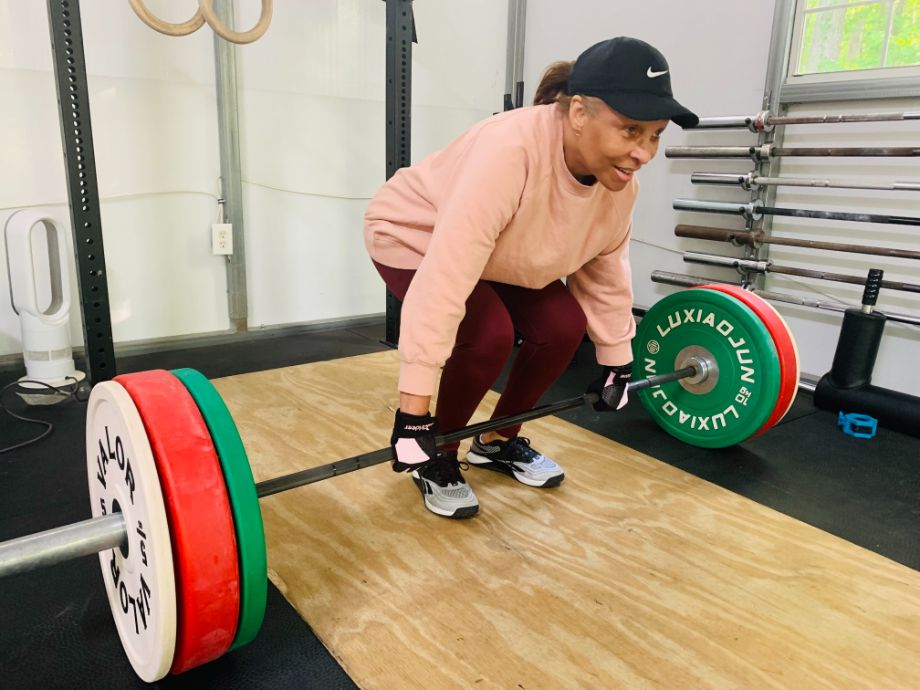
As we age, bone density can decrease, leading to osteoporosis and an increase in the likelihood of fractures. However, a 2018 review6 shows that resistance training can positively impact bone health, maintaining and even increasing bone mineral density.
10. Can Help Improve Posture
Studies show7 that poor posture can lead to low back pain; deadlifts can combat this through the exercise’s emphasis on proper form. A standard deadlift requires a neutral spine and keeping the shoulders back—all good things to practice for posture. Also, a deadlift focuses on core strength, which increased strength will also help you maintain good posture throughout the day.
11. Increases Grip Strength
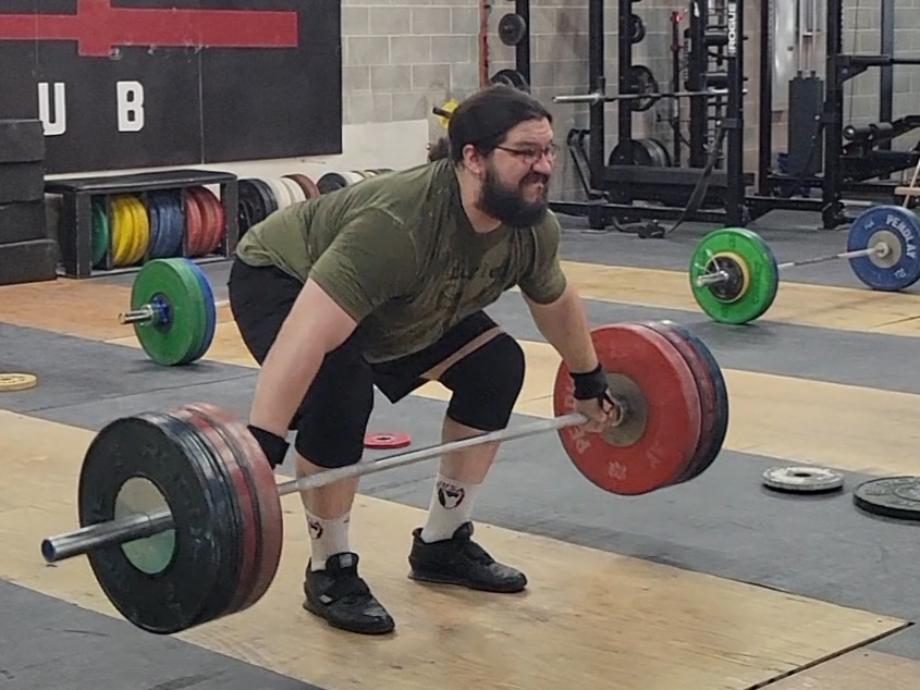
The deadlift requires a lot of strength from your grip and forearms to lift the heavy weight effectively.Over time, training the deadlift in your workouts will help increase your grip strength. Although a maximal effort deadlift can train your grip strength well, lower weights and higher reps will challenge you to maintain a firm grip on the bar for an extended period.
RELATED: Grip Strength Exercises
12. Can Help Improve Cardio
Don’t get me wrong; deadlifts are a strength exercise, not a conditioning exercise. However, more reps and sets combined with shorter rest periods can make this full-body workout a bit of a lung burner, helping train muscular and cardiovascular endurance. Even if you favor cardio over strength training, research shows8 that strength training (like the deadlift!) can help improve the performance of endurance athletes.
13. Helps Burn Calories
Most people in the gym are looking to build muscle and lose fat. The key to proper weight loss is to have a calorie deficit, or intake fewer calories than you burn in a day. If you’re looking for ways to burn calories, deadlifts and resistance training are a great place to start.
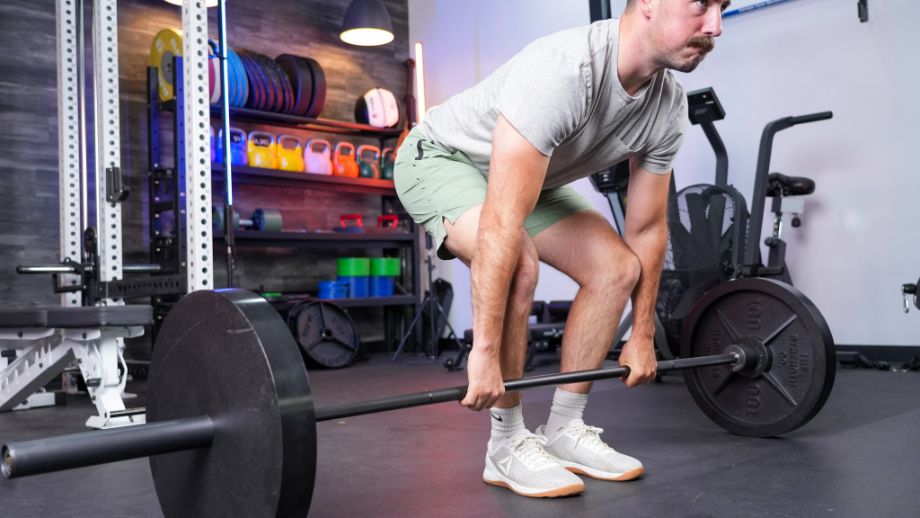
A May 2022 review9 found that resistance training was the most effective method of training to build lean muscle mass; combining that with a lower calorie diet made it an effective approach to weight loss as well. Resistance training helps burn calories by boosting your metabolism; a study from 201510 found participants increased their resting metabolic rate by 5% on average after nine months of resistance training.
How to Deadlift
Although proper deadlift form seems simple enough, there are several key factors to consider while performing the movement. Here’s how to deadlift:
- Begin by standing over a loaded barbell, with your feet about hip- to shoulder-width apart, toes pointed forward. The bar should be just over your shoelaces.
- Bend at your knees and hips, reaching down to grip the barbell just outside of your stance, using a mixed grip or overhand grip.
- Find your starting position by leaning over the bar, while setting your hips back, with your back braced and tight. Lower your shoulder blades down and back to keep your upper back and lats engaged.
- Push through your feet to stand, focusing on firing through your glutes and hamstrings to extend your knees and hips. Stay controlled, letting your hips and shoulders rise at about the same rate while maintaining a strong core.
- Stand tall, opening your hips at the top and squeezing your glutes to ensure full extension
- Control the bar back to the floor by reversing the movement, then repeat for reps as needed.
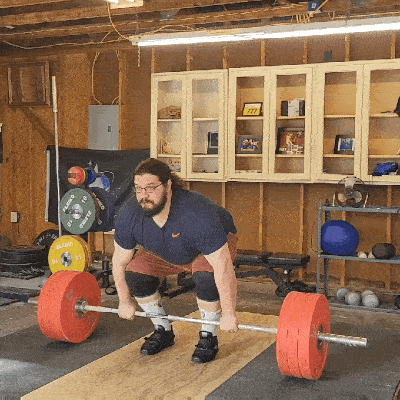
Expert Tips On Form

There’s plenty of benefits to deadlifts, but you’ll reap the best benefits by doing the deadlift properly. Here are a few cues I give my athletes to help maintain proper form:
- Brace and maintain a neutral spine: According to a 2021 study11, a rounded back during a deadlift greatly increases your risk of a back injury or, even worse, a herniated disc. To prevent that, focus on a tight back and flexed abdominal muscles to maintain the natural, neutral curve of your spine during the exercise.
- Keep the bar close: Letting the bar drift forward will shift your center of gravity forward, making the lift more difficult and adding needless excessive stress to the lower back. Think about pulling the barbell along your shins—not dragging it into your shins—to keep the bar close at the start.
- Look straight ahead: Another factor that can drift the bar away from you is your head. Looking down too much can drop your shoulders and shift the bar forward. Instead, keep a neutral position on the neck and have a relaxed gaze forward to help keep your chest up and shoulders back.
- Engage your lats: The lats play a pivotal role in keeping the bar path close and straight. Engage your lats, pulling them downward, to help maintain a closer bar path.
Deadlift Variations
Variety is a huge factor in strength training. While the conventional deadlift is a solid addition to any workout routine, here are some variations and alternatives to a barbell deadlift. These are just a few of the more common deadlift variations, but there are several different ways to lift heavy things from the ground.
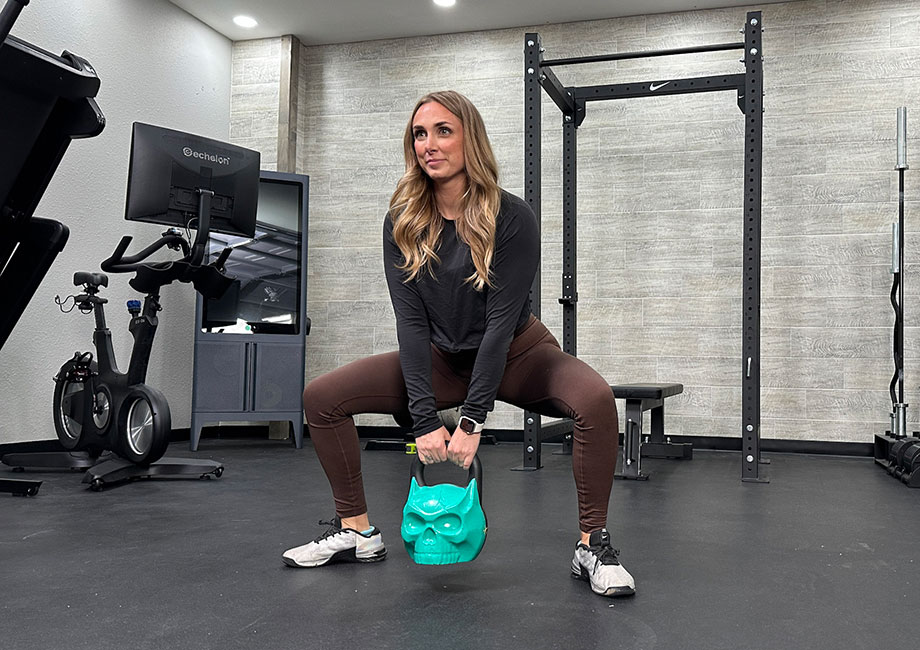
- Dumbbell and kettlebell deadlifts: To change it up, use different weights. Grab a heavy dumbbell or kettlebell in each hand, and perform the deadlift the same way. This variation can focus more on grip strength, while also addressing muscle imbalances, since the weights move independently of each other.
- Trap bar deadlifts: A trap bar deadlift utilizes a hexagonal-shaped bar, where you stand in the middle, gripping the bar with a neutral grip. Because you’re centered in the middle of the weights, this variation can help reduce the stress on your lower back, making it an ideal variation for lifters recovering from an injury, or those who struggle to maintain a neutral spine.
- Romanian deadlifts: Romanian deadlifts, or RDLs, isolate the posterior chain. To perform these, start by standing with the barbell at your hips, then shift your hips back as you hinge, maintaining a tight back and bending your knees enough to keep balanced. Reach as low as you can, and squeeze your glutes to return to standing.
- Sumo deadlifts: Sumo deadlifts have a different setup, but are performed the same way as a traditional deadlift. A sumo deadlift starts with a wide stance and narrow grip width. While it will vary from person to person, the main thing is that your stance is outside of your grip.
- Single-leg deadlifts: You can use this variation to work on unilateral strength, particularly in the posterior chain. The single-leg deadlift is basically an RDL that keeps one leg off the ground and back as you lower the weight toward the ground, before firing your glutes to return to standing.
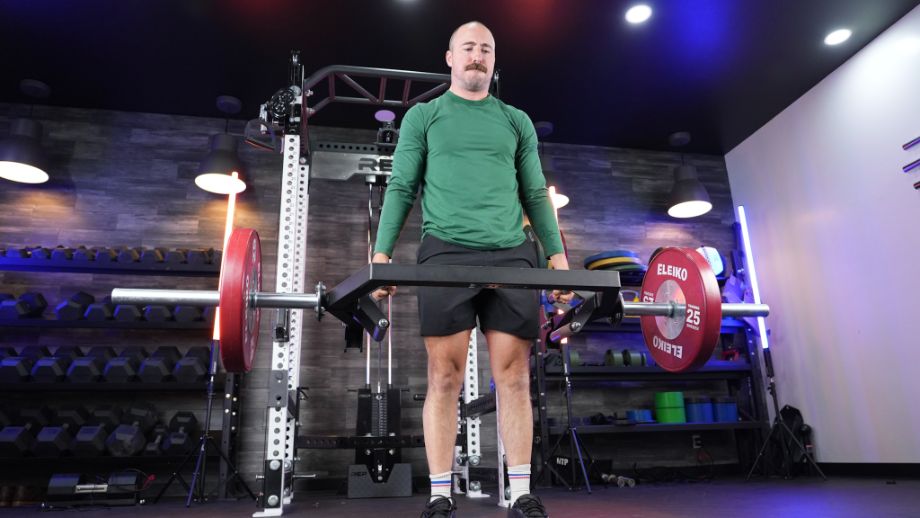
Deadlift Benefits: Final Thoughts
As a recap, here are several of the major benefits of a deadlift:
- Increased strength and muscle growth
- A full-body workout
- Improved metabolism
- Improved athletic performance
- Better posture
- Reduced back pain
- Safer to miss attempts
With all these benefits, it’s easy to see how the deadlift can be a great addition to your workout routine.
Deadlift Benefits: FAQs
Do deadlifts reduce belly fat?
Deadlifts, like most resistance training exercises, can help burn calories, which can result in fat loss. However, no exercise can target where the fat is lost from. The concept of spot reduction is a myth; although exercises may help burn belly fat, they can’t target this area for fat loss.
Are deadlifts better than squats?
The answer to this question will really depend on your goals. While both lifts are primarily leg workouts, each exercise targets the legs a little differently. The squat engages the quads more than the deadlift, and the deadlift recruits the glutes and hamstrings more.
So, if your goal is building the quads, then the squat might be the better option. Likewise, the deadlift is better for someone working on hamstring strength.
That said, both lifts are a fantastic addition to any strength training program.
What muscles do deadlifts work?
Deadlifts primarily train the legs and lower back—glutes, hamstrings, and hip and back extensors. However, the deadlift is also considered a full-body workout, as to effectively perform it, you’ll need a strong, active core and an engaged upper back—lats, rhomboids, and erector spinae. The lift will even work on grip strength over multiple sets and reps.
References
- Thompson, Brennan J.; Stock, Matt S.; Shields, JoCarol E.; Luera, Micheal J.; Munayer, Ibrahim K.; Mota, Jacob A.; Carrillo, Elias C.; Olinghouse, Kendra D.. Barbell Deadlift Training Increases the Rate of Torque Development and Vertical Jump Performance in Novices. Journal of Strength and Conditioning Research 29(1):p 1-10, January 2015. | DOI: 10.1519/JSC.0000000000000691
- Berglund, Lars1,2; Aasa, Björn2; Hellqvist, Jonas1; Michaelson, Peter3; Aasa, Ulrika1. Which Patients With Low Back Pain Benefit From Deadlift Training?. Journal of Strength and Conditioning Research 29(7):p 1803-1811, July 2015. | DOI: 10.1519/JSC.0000000000000837
- Sharrock C, Cropper J, Mostad J, Johnson M, Malone T. A pilot study of core stability and athletic performance: is there a relationship?. Int J Sports Phys Ther. 2011 Jun;6(2):63-74. PMID: 21713228; PMCID: PMC3109894.
- Nigro F, Bartolomei S. A Comparison Between the Squat and the Deadlift for Lower Body Strength and Power Training. J Hum Kinet. 2020 Jul 21;73:145-152. doi: 10.2478/hukin-2019-0139. PMID: 32774546; PMCID: PMC7386153.
- Shaner, Aaron A.1; Vingren, Jakob L.1,2; Hatfield, Disa L.3; Budnar, Ronald G. Jr1; Duplanty, Anthony A.1,2; Hill, David W.1. The Acute Hormonal Response to Free Weight and Machine Weight Resistance Exercise. Journal of Strength and Conditioning Research 28(4):p 1032-1040, April 2014. | DOI: 10.1519/JSC.0000000000000317
- Hong AR, Kim SW. Effects of Resistance Exercise on Bone Health. Endocrinol Metab (Seoul). 2018 Dec;33(4):435-444. doi: 10.3803/EnM.2018.33.4.435. PMID: 30513557; PMCID: PMC6279907.
- Nowotny J, Nowotny-Czupryna O, Brzęk A, Kowalczyk A, Czupryna K. Body posture and syndromes of back pain. Ortop Traumatol Rehabil. 2011 Jan-Feb;13(1):59-71. English, Polish. doi: 10.5604/15093492.933788. PMID: 21393649.
- Beattie K, Kenny IC, Lyons M, Carson BP. The effect of strength training on performance in endurance athletes. Sports Med. 2014 Jun;44(6):845-65. doi: 10.1007/s40279-014-0157-y. PMID: 24532151.
- Lopez P, Taaffe DR, Galvão DA, Newton RU, Nonemacher ER, Wendt VM, Bassanesi RN, Turella DJP, Rech A. Resistance training effectiveness on body composition and body weight outcomes in individuals with overweight and obesity across the lifespan: A systematic review and meta-analysis. Obes Rev. 2022 May;23(5):e13428. doi: 10.1111/obr.13428. Epub 2022 Feb 21. PMID: 35191588; PMCID: PMC9285060.
- Aristizabal JC, Freidenreich DJ, Volk BM, Kupchak BR, Saenz C, Maresh CM, Kraemer WJ, Volek JS. Effect of resistance training on resting metabolic rate and its estimation by a dual-energy X-ray absorptiometry metabolic map. Eur J Clin Nutr. 2015 Jul;69(7):831-6. doi: 10.1038/ejcn.2014.216. Epub 2014 Oct 8. PMID: 25293431.
- Yanagisawa O, Oshikawa T, Matsunaga N, Adachi G, Kaneoka K. Acute Physiological Response of Lumbar Intervertebral Discs to High-load Deadlift Exercise. Magn Reson Med Sci. 2021 Sep 1;20(3):290-294. doi: 10.2463/mrms.mp.2020-0052. Epub 2020 Sep 1. PMID: 32879259; PMCID: PMC8424024.
Further reading

In our Train Hard app review, we go over how this training program may help you build muscle, gain strength, develop endurance, and improve overall wellness. Read more

Our beginner’s guide to CrossFit exercises explains everything you’d ever want to know about the popular training program. Check it out here! Read more

Our Aviron Strong Series Rower review takes an in-depth look at Aviron’s newest smart rower. Read more

If you’re weighing steady-state cardio vs HIIT workouts, here is everything you need to know. Read more

